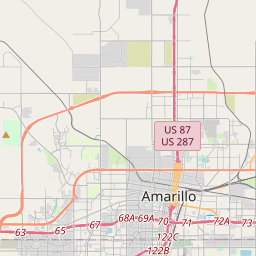American Legion Hanson Post No. 54
Historical marker location:






Amarillo’s American Legion Post, organized in July 1919, is one of the oldest in Texas, formed two months after the group’s organizational caucus in St. Louis. The post, which officially received its charter in Sep. 1919, is named for David T. Hanson, a popular Amarillo doctor who served in the Spanish-American War and World War I. Volunteering as a surgeon with the 142nd infantry, he was killed while attending to a wounded soldier at St. Etienne, France. Ernest O. Thompson, later mayor of Amarillo, was the first post commander. Hanson Post worked to secure jobs and medical care for veterans, and promoted creation of a veterans hospital in the region. The post also helped coordinate veterans’ affairs before Amarillo received a branch of the Veterans Bureau in 1927. Hanson post also donated clothes, food and toys to needy veterans’ families at Christmas.
The post first met in the district courtroom of the Potter County Courthouse before moving to the Woodmen of the World Hall. In 1923, the Municipal Auditorium, dedicated to the war dead, included meeting space for the Legion Post; national post commander Alvin Owsley attended the dedication ceremony. The post later bought a building at Seventh and Madison streets which has been its headquarters ever since. Hanson post developed a ladies auxiliary (1920), junior auxiliary (1923), an early R. O. T. C. Unit (1928) and a Sons of the Legion (1934). In 1939, Amarillo got the Veterans Hospital which Hanson Post and civic leaders worked so hard to secure, bringing an important source of construction and medical jobs for the region. Post membership peaked around 1,200 members following World War II. The post continues to support active duty military personnel and veterans throughout the world
As one of the most visible programs of the Texas Historical Commission (THC), historical markers commemorate diverse topics in Texas history, including: the history and architecture of houses, commercial and public buildings, religious congregations, and military sites; events that changed the course of local and state history; and individuals who have made lasting contributions to the state, community organizations, and businesses.
Texas is known for its love of football, and the state has produced many great football players, including legends like Tom Landry, Earl Campbell, and Vince Young.
In 1876, Potter County was officially established and named after Robert Potter, a lawyer and signer of the Texas Declaration of Independence. The county's first town, Amarillo, was founded soon after and quickly became the county seat. Initially, Amarillo served as a cattle shipping point and a center for trade, attracting businesses and settlers from surrounding areas.
The early 20th century brought significant development to Potter County. The discovery of oil in nearby areas in the 1920s led to a boom in the county, with oil companies setting up operations and bringing wealth and jobs to the region. This growth and prosperity continued throughout the 20th century, with Amarillo becoming a major economic and cultural hub in the Texas Panhandle.
Today, Potter County continues to thrive as a vibrant community. Its economy is diversified, with significant contributions from industries such as healthcare, education, agriculture, and tourism. The county boasts numerous parks, museums, and attractions, making it an attractive destination for visitors. With its rich history and ongoing growth, Potter County remains a significant contributor to the heritage and economy of Texas.
Potter County Timeline
This timeline provides a glimpse into the major events and milestones that have shaped the history of Potter County, Texas.
- Potter County is formed on August 21, 1876
- In 1886, Amarillo becomes the county seat of Potter County
- The first courthouse in Potter County is built in 1887
- The first oil well is drilled in Potter County in 1921
- Potter County experiences significant growth during the oil boom of the 1920s
- Palo Duro Canyon State Park is established in Potter County in 1934
- In 1951, the Pantex Plant is established in Potter County, becoming a key facility for the assembly and disassembly of nuclear weapons
- The Tri-State Fair & Rodeo, held annually in Potter County, celebrates its 100th anniversary in 2021